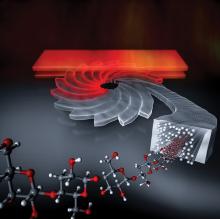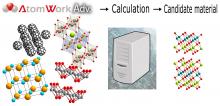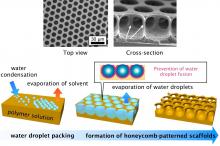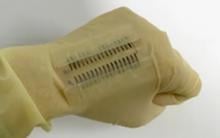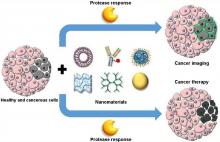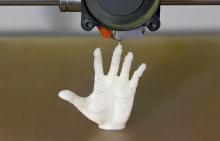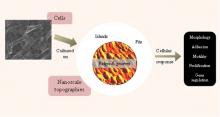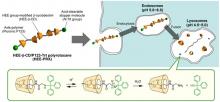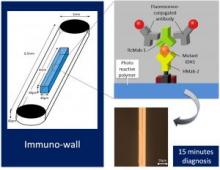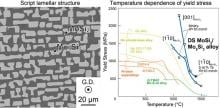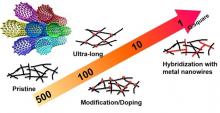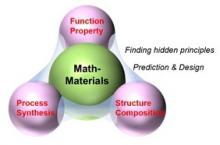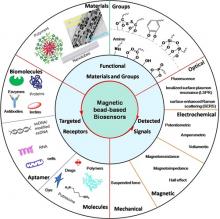Science and Technology of Advanced Materials
News
24 Jan 2019
Nanocellulose offers renewable, biodegradable, strong and lightweight components for electronic products.
07 Jan 2019
A more systematic, data-driven approach could identify materials that can improve our energy use.
21 Nov 2018
Research into porous films made via the condensation of humid air could lead to materials with applications ranging from medicine to photovoltaics.
20 Nov 2018
Materials that harvest heat and turn it into electricity could lead to more cost-effective devices.
29 Oct 2018
Nanomaterials that respond to cancer-specific stimuli show potential in the targeted delivery of treatments and imaging compounds, but many challenges remain.
10 May 2018
Researchers in Ireland have found a strong contender for a portable mercury sensor: individual gold nanorods.
19 Apr 2018
Nanocellulose offers renewable, biodegradable, strong and lightweight components for electronic products.
12 Mar 2018
3D printing shows potential for fabricating personalized ‘soft’ robotic hands and hearts. But challenges need to be addressed.
10 Oct 2017
Opportunity to gain deeper insight into potential interaction between implants and body tissues through high-output benchtop screening.
12 Sep 2017
Japanese researchers have helped discover, analyze and commercialize novel conducting materials and products, such as zirconia-based gas sensors and lithium-ion batteries.
04 Sep 2017
Solid crystals that self-assemble to form channels for an electric current could make safer batteries.
01 Sep 2017
Investigation of paper-based electronics continues to advance, showing exciting signs of progress.
10 May 2017
Cellulose nanofibers can help particles in ink and printed electronics disperse evenly, rather than spread apart like dried coffee rings.
03 May 2017
Cyanine dyes could improve the efficiency of using molecular probes to identify, for example, the presence of a virus or a tumour receptor.
11 Apr 2017
A common language for computer software tools that describes materials at their smallest scale could lead to designing faster and better materials.
22 Mar 2017
Ultra-sensitive devices are being developed to detect biological and chemical compounds.
28 Feb 2017
Silicon nanowires fabricated using an imprinting technology could be the way of the future for transistor-based biosensors.
04 Nov 2016
Nanoscale manipulation on the surface of materials could stimulate cells to differentiate into specific tissues – eliminating the use of growth or transcription factors.
02 Nov 2016
Researchers in Japan have improved a potential treatment for a rare genetic disease, decreasing its negative toxic effects by threading it onto a dumb-bell-shaped chain and holding it in place until it reaches its target.
05 Oct 2016
A team centered at Nagoya University, Japan, have developed a device for quick, accurate identification of a mutation strongly associated with a cancer that affects the central nervous system, potentially enabling accurate removal of the entire tumor during an operation.
23 Sep 2016
Researchers at Kyoto University have found that molybdenum silicides can improve the efficiency of turbine blades in ultrahigh-temperature combustion systems.
05 Sep 2016
Carbon nanotubes show potential, but also many challenges, for the manufacture of flexible, wearable electronics, according to a research review in Science and Technology of Advanced Materials.
28 Jul 2016
Scientists are developing more highly sensitive devices for the detection of biological and chemical compounds.
09 Jun 2016
The rapidly evolving branches of materials science need mathematics to translate their accumulating knowledge into a common language.
03 Jun 2016
The discoverer of the first iron-based superconductor, one of Science magazine’s 2008 runner-up breakthroughs of the year, now reports finding around 100 new superconducting materials.
17 Mar 2016
Japanese scientists have reviewed recent progress in advanced optical materials based on gadolinium aluminate garnet (GAG), while pointing out the knowledge gaps that need to be filled to improve their optical performance.
14 Mar 2016
Recent developments and research related to iron oxide nanoparticles confirm their potential in biomedical applications – such as targeted drug delivery – and the necessity for further studies.
25 May 2015
A powerful new antiseptic agent, called ozone nanobubble water, holds promise for the treatment of periodontitis, or severe gum infections, according to research published in the journal Science and Technology of Advanced Materials.
Events
Sorry, no events coming up for this topic.
Researchers
Sorry, no researchers coming up for this topic.
Giants in history
Sorry, no researchers coming up for this topic.


